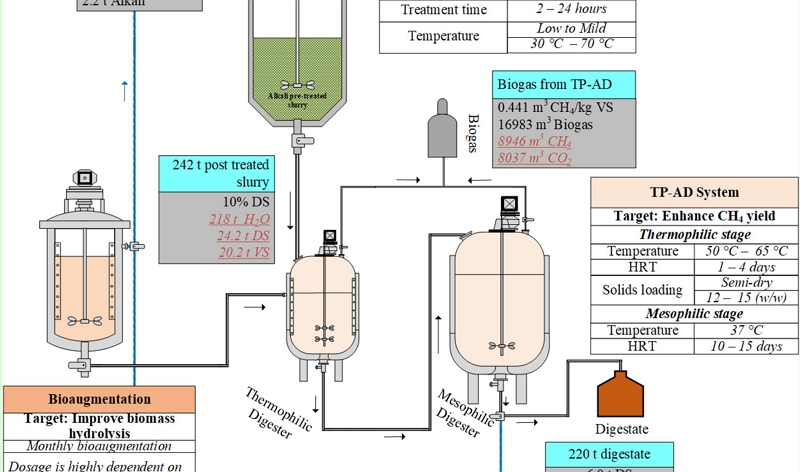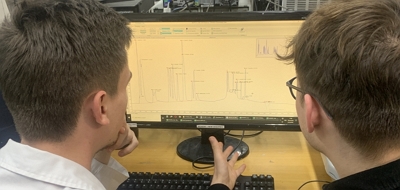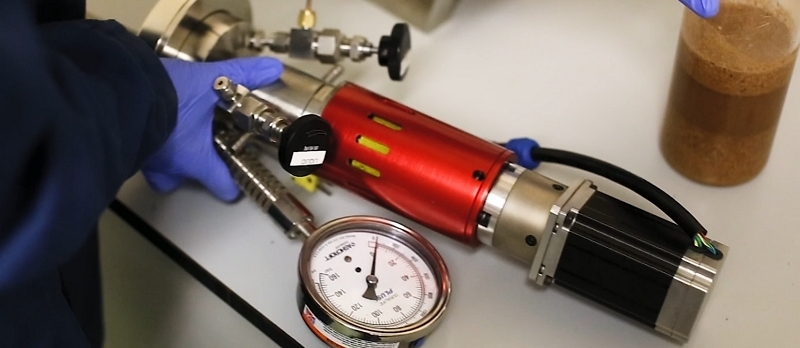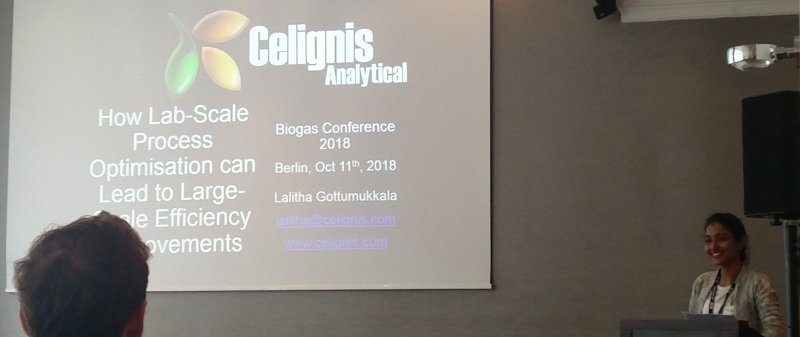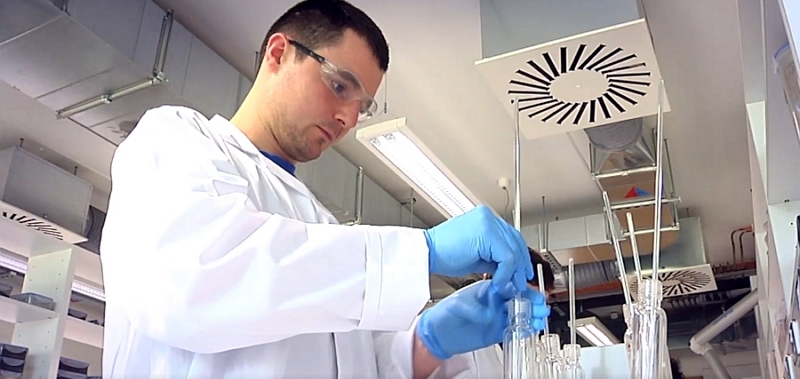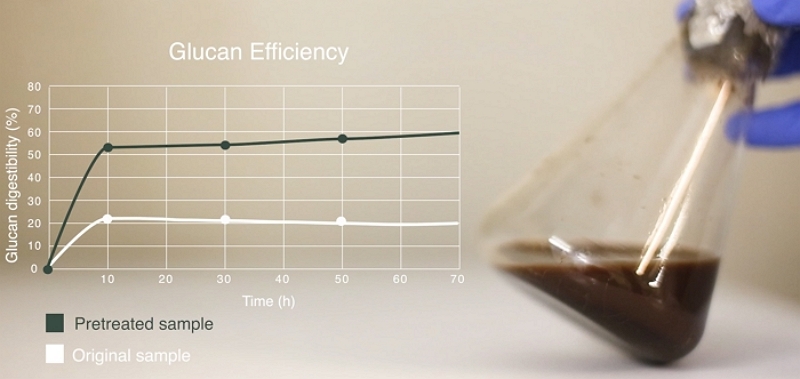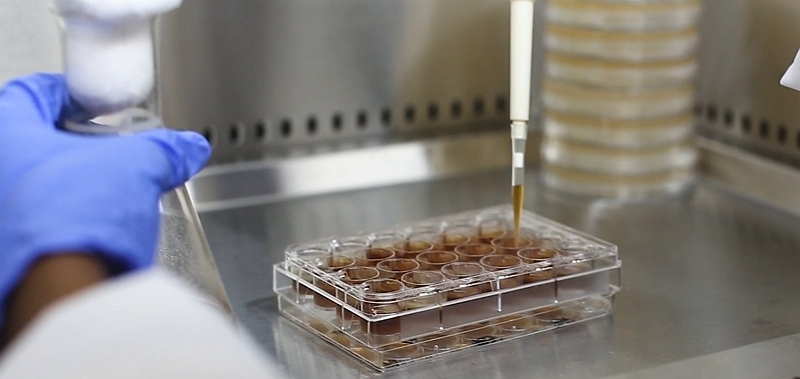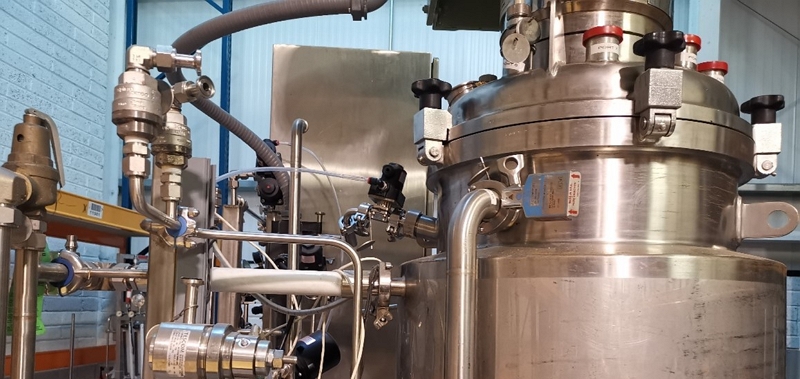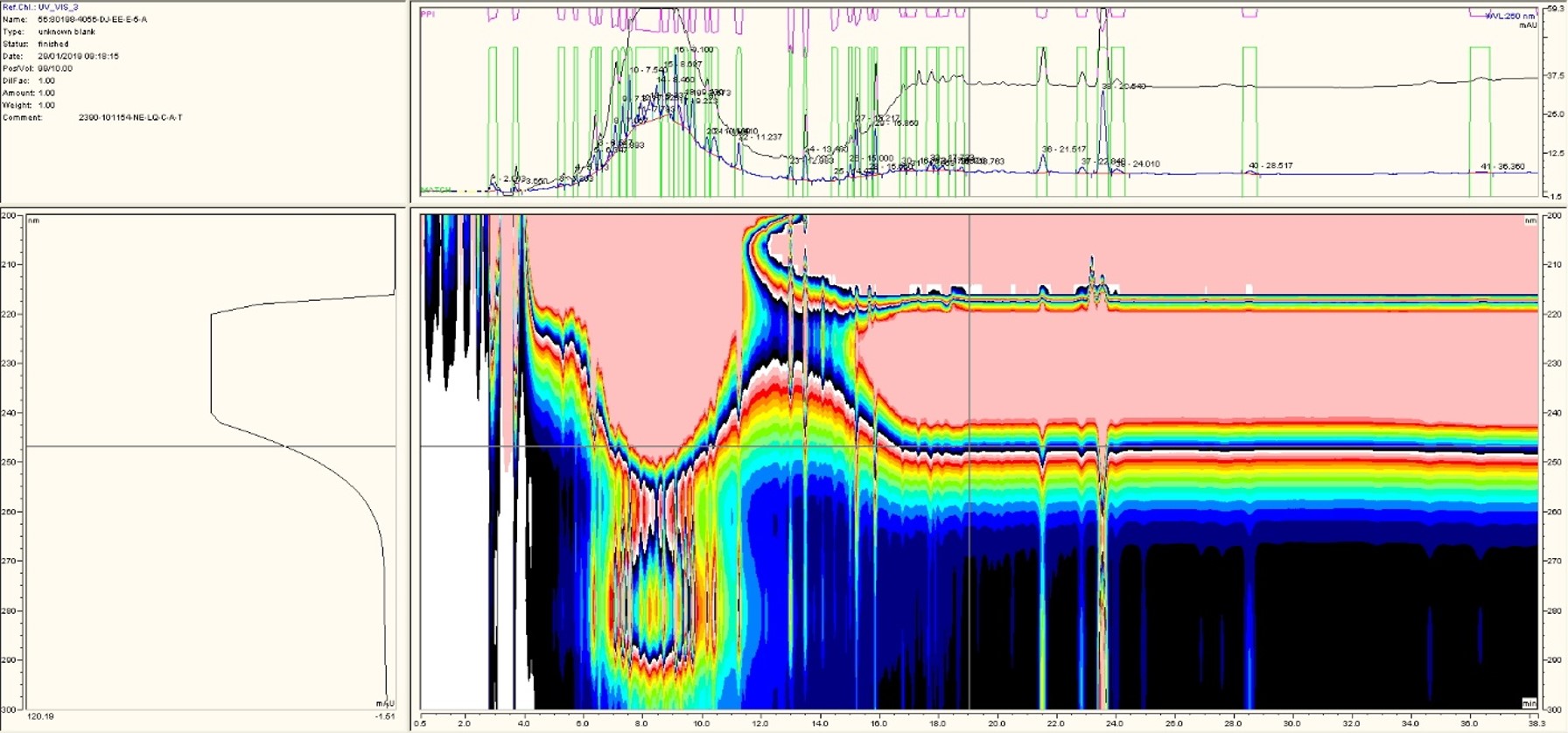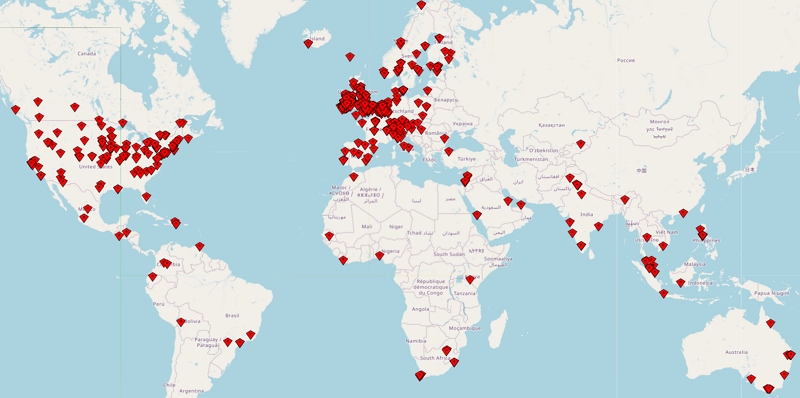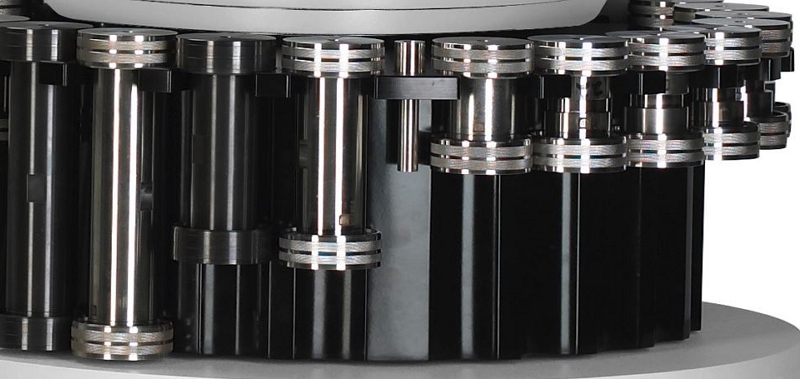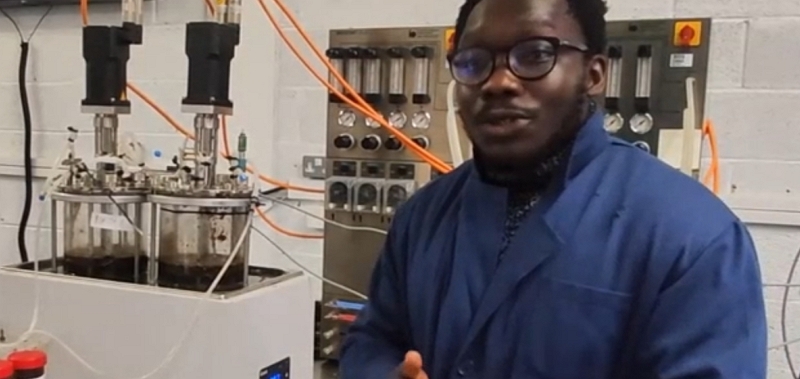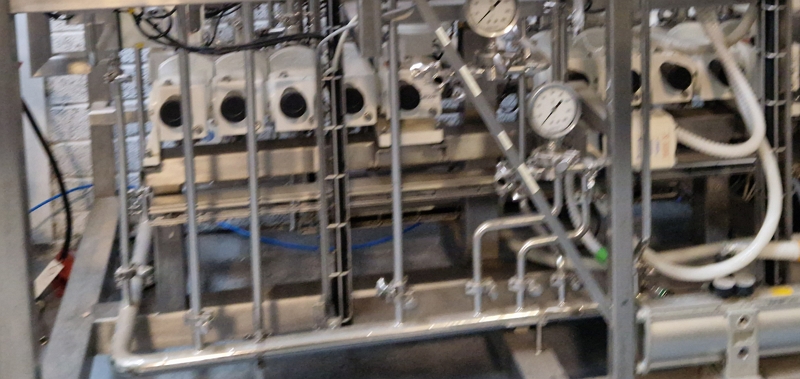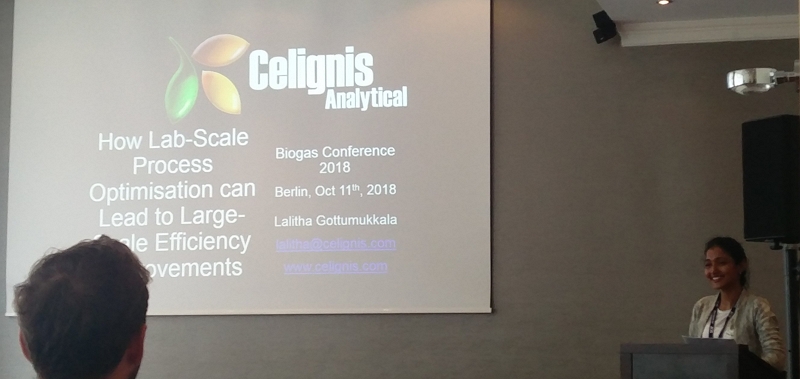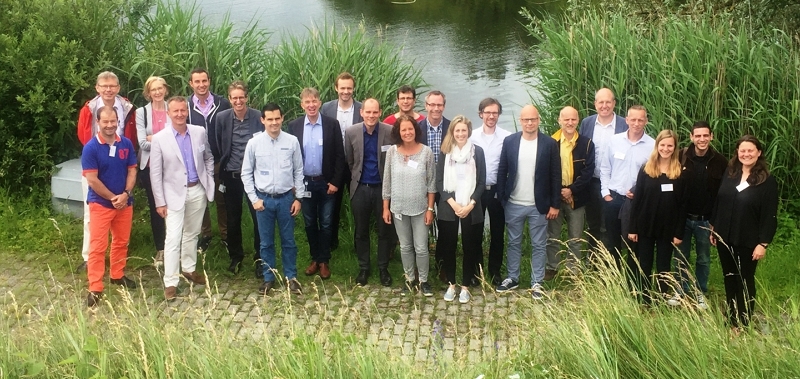How our Bioprocess Development Services Work
The bioprocess can be a fully vertically-integrated process, involving every stage of processing and conversion, starting from the original feedstock (e.g. corn stover) and ending at the final product (e.g. bioethanol). Alternatively, the bioprocess can be considered to a specific node within a larger sequence of processing steps, for example the pretreatment applied to the corn stover prior to the subsequent hydrolysis and fermentation stages.
TEA is often used in the development and commercialization process of new technologies or systems, where it serves to identify potential economic and technical obstacles, assess the competitiveness of the technology against existing solutions, and determine the conditions under which the technology would be economically viable.
Celignis has a number of TEA experts. They have undertaken TEAs at the PhD level and as projects for clients covering many different technological approaches and scales. We recognise that a detailed and comprehensive TEA is a key step in assessing as to how an existing bioprocess can be improved and in determining the viability and areas for improvement in a newly developed bioprocess.
We often recommend to our clients that TEA work is undertaken routinely during the bioprocess development project so that the commercial-viablity of the process is kept centre-stage.
Get more info...TEA
Life-Cycle Analysis
Life Cycle Analysis (LCA), also known as Life Cycle Assessment, is a method used to evaluate the environmental impacts of a product, process, or service throughout its entire life cycle. The life cycle covers all stages, from raw material extraction, manufacturing, distribution, and use, to end-of-life disposal or recycling. In the context of bioprocess development, LCA is a critical tool for several reasons:- Environmental Impact - E.g greenhouse gas emissions, water use, waste generation, etc. of the bioprocess.
- Sustainability - Bioprocesses are often developed to be more sustainable than traditional chemical processes. An LCA provides a quantitative measure of this sustainability, assessing the environmental footprint compared to traditional alternatives.
- Process Optimisation - By identifying the most environmentally harmful stages of the bioprocess, an LCA can guide efforts to optimise the process. These could target reduced waste, improved energy efficiency, or better use of raw materials.
- Regulation and Standards Compliance - Many industries and markets are increasingly subject to environmental regulations and standards, which may require an LCA to demonstrate compliance. In addition, an LCA can support marketing claims about the environmental benefits of a product or process.
- Decision-Making Support - LCA provides valuable data for making informed decisions about product development, process design, and resource allocation. By considering the environmental impacts, alongside technical & economic feasibility (in a TEA), LCA supports a more holistic means of bioprocess development.
Product-Centred Bioprocess
Many bioprocess projects arise from the need or aspiration of an organisation to source a biobased chemical to substitute for one of their existing products or for one of the ingredients in their processes. For example, a food manufacturer may wish to develop a bioprocess to produce propionic acid for use as a more sustainable food preservative, replacing the synthetic chemicals that the company currently purchases to preserve the food. As a second example, a fossil-fuel company may wish to develop a bioprocess for the production of a drop-in biobutanol to improve the biofuel content of their product range.In this scenario the final-product is locked-down and, instead, the bioprocess development can focus on the best approach to sustainably and profitably get it. This can mean that there is some flexibility with regards to the feedstock and particular processing technologies to be employed. The Celignis team will consider the existing infrastructure of the client when designing the bioprocess as well as any side-streams/residues that the client can avail-of as a feedstock. For example, the food manufactuer may have sugar-rich liquid side-streams as part of their existing food production operations and these can then be used as a substrate for propionic-acid fermentation.
Click below to read more about our Bioprocess Development for the production of Biobased Chemicals, including dedicated pages for several such chemicals (including bioethanol, biobutanol, and xylitol).
Get more info...Biobased Chemicals
Feedstock-Focused Bioprocess
A second category of bioprocess development concerns the aspiration for an organisation to efficiently valorise a particular feedstock. The feedstock can be one that the company is currently processing but for which more a profitable and sustainable end-use is sought. As example of this case would be a sugar-mill operator that currently combusts the sugarcane bagasse residue but is examining other valorisation approaches for this feedstock.The feedstock in question may also be a waste, of the organisation's current process, that is currently disposed-of or otherwise handled/treated at cost. Developing a bioprocess to valorise this waste would help to improve the sustainability of the entire process and also improve profitability by generating extra net revenue from this side-stream where previously it represented a net cost to the process. An example of this case would be a company developing a bioprocess to ferment a COD-rich effluent stream to biobased chemicals (e.g. volatile fatty acids, VFAs), replacing the existing wastewater treatment processes required to treat this effluent prior to its disposal into municipal wastewater facilities.
In this scenario the feedstock is locked-down but the technological approaches and final end-product(s) are open. Again, the Celignis team will consider the existing infrastructure of the client when designing the bioprocess as well as any existing chemical demands of their main process when considering the final products.
Refinement of Existing Bioprocess
Another type of bioprocess development focuses on the improvement of an existing bioprocess. This improvement can target the whole bioprocess or specific nodes in the wider process scheme. The targets for the improvement can be: product yield, OPEX reductions, and improved product quality, among others.Our normal approach for tackling this kind of bioprocess improvement project involves us first examining the existing bioprocess in detail. Ideally, this examination would including a TEA and, if required, an LCA. Following this work we can then identify key aspects of the process where we consider improvements can be made. We then proceed to undertake lab-scale experiments in order to assess these hypotheses and to narrow-down the process conditions that will allow for the targeted improvements to be realised.
One example of such a process refinement project undertaken at Celignis concerns us optimising a process for oligomer production from a certain polysaccharide substrate. Our client had an existing process targeting the production of oligomeric sugars from this material, however the chain-length distribution of the products, as well as the ratio of oligomeric to monomeric sugars, were not in the preferred range for the targeted application. Celignis personnel reviewed the existing process and formulated an experimental plan (Design of Experiments, DoE) to optimise a range of parameters (e.g. enzyme type and dosage, temperature, mixing rate etc.) considered important to achieving the project's goals. The data obtained from this DoE gave a clear understanding of the dynamics of oligosaccharide production and allowed us to optimise the conditions so that the client was able to obtain a product stream with improved characteristics.
Click below to read more about our Bioprocess Development Services for improving existing bioprocesses.
Get more info...Process Improvements
New Full-Value-Chain Bioprocess
We can also work on Bioprocess Development for an entirely new bioprocess, covering all stages of the process-scheme. This means we start with the original feedstock and develop all stages involved in processing it and obtaining the targeted product(s). Developing such a comprehensive bioprocess requires considering, and developing approaches for, a number of key aspects, including:- Feedstock Selection and Preparation - Factors to consider in feedstock selection include: availability, cost, composition, and sustainability. There may also need to be steps for extraction and/or pretreatment of the biomass prior to the main conversion.
- Primary-Conversion Technology - Here a type of bioprocess technology needs to be selected that alignis with the feedstock(s) and target product(s). Early work in bioprocess development may involve lab-scale testing of different types of bioprocesses before making a final decision on the technology type to be optimised.
- Downstream Processing Steps - Depending on the feedstock and desired end-products, there may be one or more subsequent conversion steps following the primary conversion technology. An example would be the downstream fermentation to bioethanol of the cellulose-derived glucose obtained via dilute-acid hydrolysis (Primary Conversion Technology) of lignocellulosic biomass.
- Side-Stream Valorisation - An optimal bioprocess should follow the biorefinery principle of cascading-use of biomass where, as much as is practical, all main feedstock elements are valorised. In the example of lignocellulosic bioethanol, one means of side-stream valorisation would be to develop a bioprocess to valorise the lignin-rich side-stream arising after hydrolysis or pretreatment.
- Product-Recovery and Purification - This stage could involve filtration, centrifugation, distillation, and chromatography, among other approaches. The work can also evaluate the recovery of other saleable chemicals beyond the main target product. Click here to read more about this aspect of bioprocess development.
- Waste Management - There should be an emphasis on reducing, reusing, or recycling waste streams where possible.
- Process Integrations - CAPEX and OPEX can be reduced by considering ways in which the different nodes of the full bioprocess can be consolidated or how energy and chemical inputs can be shared/conserved between them.
Get more info...Bespoke Full Process
1. Understanding Your Requirements
Prior to undertaking bioprocess projects we learn from our clients what their targets are from the process as well as whether there are any restrictions or requirements that may need to form the boundaries of the work that we undertake. These help to guide us to then prepare a potential bioprocess development project.
If the focus of the BDS is on the improvement of an existing process then it is likely that, at this Stage, we will undertake a preliminary technoeconomic analysis (TEA) of that process. This allows us to examine the process in detail and to identify specific aspects that can be improved in the subsequent experimental work.
2. Detailed Feedstock Analysis
In cases where you have already selected a feedstock for the bioprocess, we would then undertake a detailed compositional analysis (P10 or, ideally, P19) of representative samples of that feedstock.
In cases where the feedstock has not yet been selected we can review your list of candidate feedstocks, selecting top candidates based on our prior experience in their analysis and bioprocessing. If you do not have a list of candidate feedstocks then we can provide one, based on your location and the requirements outlined in Stage 1. We would then analyse in detail these priority feedstocks and come to a decision, based on the compositional data and other relevant factors (e.g. price, supply, consistency etc.) on a selected feedstock for the project.
At this point of the project, the Celignis Bioprocess team typically meet to discuss and prepare a project proposal for the development of the bioprocess from this feedstock. After this proposal is reviewed by the client, and revised if needed, we are then ready to start work on the next Stages.
3. Development of Core Bioprocess
This Stage can, depending on the technology, feedstock, and product, consist of multiple Substages. For example, in a project focused on the production of bioethanol from a lignocellulosic residue (e.g. corn stover) these Stages may include: a pretreatment, hydrolysis, and the subsequent fermentation of the biomass-derived sugars.
Each such Substage will follow a similar approach, in terms of the development and optimisation of the bioprocess. We follow a scientifically-based Design of Experiments (DoE) protocol where the criteria and boundaries for the DoE are formulated in close collaboration with our clients, considering the chemistry of the feedstock(s) and our understandings of the mechanisms of biomass conversion.
It is possible that there may be initial experiments comparing different bioprocessing technologies for one or more of these Substages. Such comparison trials may involve a small DoE covering each technology. Following the selection of the most suitable conversion process then a more detailed DoE will be undertaken to fully optimise the process.
For each experiment we analyse the solid and liquid outputs of the process, leading to a detailed data-set where effects of process conditions on the yield and composition of the various streams can be explored and mapped.
At this Stage we usually recommend that these optimisation experiments are undertaken at the lab-scale (around TRL3) in order to reduce costs and the length of the project. The work may also involve a second iteration of lab-scale experiments (following the completion of the initial DoE) in order to fine-tune the conditions based on the knowledge gained in the initial experiments.
It is possible that the experimental activities, optimising the different Substages in the development of the core bioprocess, can be undertaken in parallel or in sequence (e.g. optimisation of pretreatment, followed by an optimisation of hydrolysis, followed by an optimisation of fermentation). Which approach is most suitable will depend on the specifics of the project, the interdependencies between the stages, and our client's preferred timeline.
4. Product Recovery & Side-Stream Usage
Based on the outputs of the prior lab-scale Stage we can optimise the methods employed for separating and purifying the target product(s). We can also potentially look at the recovery of other compounds from the liquid and solid outputs of the primary process.
At this Stage we can also undertake experiments to valorise any side-streams and residues that may arise alongside the primary outputs. Taking an example of a core bioprocess that is focused on the production of biobutanol from the cellulose component of a lignocellulosic feedstock (e.g. sugarcane bagasse), where that bioprocess involves an organosolv pretreatment, then this Stage of the project can consider means by which the pentose sugars in the liquid output of that pretreatment can be valorised (e.g. used for xylitol production).
As before, the work in this Stage will involve evaluating the effects of varying a number of different process conditions via a detailed DoE being undertaken.
5. Validation at Higher TRLs
Once we have concluded our optimisation of the bioprocess conditions at the lab-scale we can then test those conditions at higher technology readiness levels (TRLs). The scales at which we can operate are dependent on the type of technology employed, but can reach up to 100 litres.
We have all of the necessary downstream equipment to efficiently handle the solid and liquid streams arising from these scaled-up activities.
If we find that there are differences between the yield and compositions of the different streams, compared with our lab-scale experiments, then we can explore the potential reasons for these and work on final tweaks to optimise the bioprocess for higher TRLs.
6. Technoeconomic Analysis (TEA)
The Celignis team, including Oscar our chief TEA expert, can undertake a detailed technoeconomic analysis of the developed process. We apply accurate and realistic costing models to determine the CAPEX and OPEX of simulated and pilot scale processes which are then used to determine key economic indicators such as IRR, NPV and payback periods.
Within these TEAs we can undertake sensitivity analyses to assess the effect of variable costs and revenues on the commercial viability of the process.
Our preferred approach is to include TEA studies at each stage of the development of the bioprocess, so that the process can be optimised in a commercially-relevant way, followed by a more detailed TEA after the process has been optimised and tested at higher TRL levels.
Click here to read more about the technoeconomic analysis (TEA) services offered by Celignis.
Bioprocess Development Projects - Case Studies
Pectin from Agricultural Residues
Celignis has undertaken a bioprocess development project for a client looking to obtain pectin from the residues of their core biomass valorisation technology. The extraction of pectin is complex and challenging and requires careful bioprocess development in order to ensure that the product is obtained in high yields and high purities.Our work involved the evaluation of a number of different processes for pectin extraction, covering how variations in key process parameters influenced the yield and quality of the final pectin. This initial work led to a core extraction process being selected with additional experimental work then undertaken to optimise the process. Additional tasks in the project included pectin recovery and detailed analysis of the final product(s) in order to ascertain suitable end-use applications. The project also involved the optimised conditions being tested in larger reactors in order to evaluate the scale-up potential of the process.
Bioethanol from Palm Residues
Celignis undertook a bioprocess development project for a client, based in the Middle East, that was targeting the production of bioethanol from the residues of local palm trees. This was a lab-scale vertically-integrated project covering pretreatment, and separate hydrolysis and fermentation (SHF).The project involved a series of lab-scale experiments focused on optimising the pretreatment conditions so that the yields and commercial viability of the process as a whole could be improved. The next stage of the project then involved optimising the type and dosage of enzymes, as well as other factors such as the solid-loading, in order to maximise ethanol yields from the targeted biomass components.
Biomaterials from Seaweed
Another Bioprocess Development Project undertaken by Celignis concerned the development of a new sustainable process for the extraction, and subsequent modification, of alginate from seaweed. The process developed by Celignis allowed for alginate extraction without the use of harsh chemicals (e.g. bleaches) and also considered the valorisation of process side-streams (e.g. fucoidan, cellulose etc.).The target of the project were polymers of improved properties for application in a variety of different biomaterials applications. We found that tweaks in the extraction and modification stages of the bioprocess could influence the physicochemical properties of the resuting alginate and could allow the process to be tailored for producing different types of materials for different end-uses.
Bioactives from Tropical Hardwoods
Celignis undertook detailed analysis of a wide variety of tropical hardwood trees for a client. This involved characterisation of different anatomical fractions (e.g. stem wood, bark, foliage) with a particular focus on the composition of the extractives of these feedstocks. We used our QTOF-LC/MS system to profile the diverse and complex array of bioactive compounds present in the samples. We then evaluated the identified compounds and selected key chemicals that could be of high potential value for sale in different markets. We then undertook a review of these compounds, considering their potential value in various markets, the processes that could be required for their separation and purification, and whether other compounds could also be obtained as part of the extraction/separation process. The final output of the project was a list of top feedstocks and chemicals for future bioprocess development.Sugars from Paper Side-Streams
This project involved the optimisation or process conditions to allow for the production and recovery, in high yields, of monomeric sugars from recycled paper/cardboard streams.The project involved examining a number of important process variables, including: pretreatment conditions; the type and loading of enzymes; and the duration and conditions of the hydrolysis stage. The final outputs of the project were selected optimum conditions for each of the examined feedstock types and recommendations for further optimisations of the process and future scaled-up activities.
Oligomers from Biomass
We have undertaken a number of projects, for different clients, focused on obtaining oligomeric sugars from biomass, or biomass-derived polymers. In some cases there have been specific requirements in terms of the preferred oligomer chain length and the ratio of monomeric to oligomeric sugars in the final liquid output.Optimising the bioprocess required a carefully-formulated DoE considering relevant factors (e.g. temperature, enzymes, pretreatment) in the context of the chosen feedstock and the final product requirements. In all such projects that we have undertaken to date we developed an improved bioprocess that allowed for greater proportions of the total carbohydrates in the liquid phase being in the client's targeted product range.

Lalitha Gottumukkala
Founder of Celignis Bioprocess, CIO of Celignis
PhD
<p style="text-align: left;">Has a deep understanding of all biological and chemical aspects of bioproceses. Has developed Celignis into a renowned provider of bioprocess development services to a global network of clients.</p>

Oscar Bedzo
Bioprocess Project Manager & Technoeconomic Analysis Lead
PhD
<p style="text-align: left;">A dynamic, purpose-driven chemical engineer with expertise in bioprocess development, process design, simulation and techno-economic analysis over several years in the bioeconomy sector.</p>
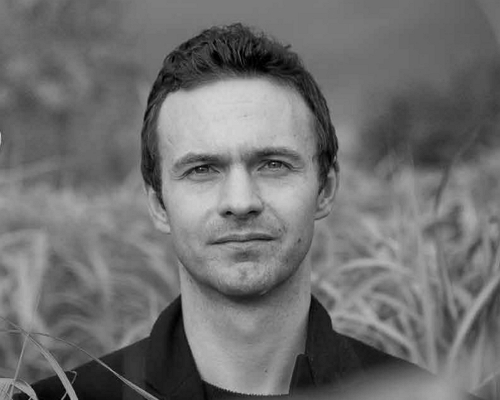
Dan Hayes
Celignis CEO And Founder
PhD (Analytical Chemistry)
<p style="text-align: left;">Dreamer and achiever. Took Celignis from a concept in a research project to being the bioeconomy's premier provider of analytical and bioprocessing expertise.</p>
Global Recognition as Bioprocess Experts
Extraction
Pretreatment
Hydrolysis
Enzymes
Fermentation
Downstream Processing
Lab-Scale Optimisations
TRL Scale-Up
Technoeconomic Analyses
Biobased Chemicals
From Process Refinements to an Entire New Process
Research Collaborations
Hydrothermal carbonization (HTC) research has mainly focused on primary char production, with limited attention to secondary char, which is formed through polymerization and condensation of dissolved organic compounds in the liquid phase. This research aims to address this gap via an experimental investigation of the impact of stirring on the mass and carbon balance of HTC reaction products, surface functional groups, and surface morphology of secondary char, using fructose as a model compound. A 3D hydrodynamic simulation model was developed for a two-liter HTC stirred reactor. The experimental results indicated that stirring did not significantly influence the pH, mass, carbon balance, and surface functional groups of secondary char produced under the range of experimental conditions (180 C, 10% biomass to water (B/W) ratio, and a residence time of 0-120 min) studied. Nonetheless, it was observed that a stirring rate of 200 rpm influenced the morphology and shape of the secondary char microspheres, leading to a significant increase in their size i.e., from 1-2 um in unstirred conditions compared with 70 um at a stirring rate of 200 rpm. This increase in size was attributed to the aggregation of microspheres into irregular aggregates at stirring rates > 65 rpm and residence times > 1 h. The hydrodynamic model revealed that high turbulence of Re > 104 and velocities > 0.17 m s-1 correlated with regions of secondary char formation, emphasizing their role in particle aggregation. Particle aggregation is significant above a stirring rate of 65 rpm, which corresponds to the onset of turbulent flow in the reactor. Finally, a mechanism is proposed, based on reactor hydrodynamics under stirred conditions, that explains secondary char deposition on the reactor walls and stirrer. | |
A dried dairy processing sludge (sludge from wastewater treatment of an effluent from a milk processing plant) was pyrolysed in a single-particle reactor at different temperatures from 400 C to 900 C. NH3 and HCN were measured online and offline by means of FTIR as well as by cumulative sampling in impinger bottles (in 0.05 M H2SO4 and 1 M NaOH, respectively) and analysed by photometric method. NO and NO2 were measured online using a nitric oxide analyser while N2O was measured by FTIR. Nitrogen (N) in the sludge and in the remaining char, char-N, was determined. Moreover, tar content in pyrolysis gas was measured and tar-N was determined. The results with respect to N mass balance closure are discussed. The different measurements techniques are compared. For pyrolysis at 520 and 700 nitrogen in the gas phase was mainly contained as N2 (36 % and 40 % respectively), followed by NH3 (15 % and 18 %), tar-N (10 % and 9 %), HCN (1 % and 3 %), NO (1 %) and NO2 (0.2 %). The dairy processing sludge has very specific properties with organic-N present predominantly as proteins and a high content of inherent Ca. These characteristics affected the distribution of N. The amount of char-N was higher while the amount of tar-N lower than for sewage sludge from literature, at comparable pyrolysis temperature. | |
Dairy processing sludge (DPS) is a byproduct generated in wastewater treatment plants located in dairy (milk) processing companies (waste activated sludge). DPS presents challenges in terms of its management (as biosolids) due to its high moisture content, prolonged storage required, uncontrolled nutrient loss and accumulation of certain substances in soil in the proximity of dairy companies. This study investigates the potential of hydrothermal carbonization (HTC) for recovery of nutrients in the form of solid hydrochar (biochar) produced from DPS originating from four different dairy processing companies. The HTC tests were carried out at 160 C, 180 C, 200 C and 220 C, and a residence time of 1h. The elemental properties of hydrochars (biochars), the content of primary and secondary nutrients, as well as contaminants were examined. The transformation of phosphorus in DPS during HTC was investigated. The fraction of plant available phosphorus was determined. The properties of hydrochar (biochar) were compared against the European Union Fertilizing Products Regulation. The findings of this study demonstrate that the content of nutrient in hydrochars (biochars) meet the requirements for organo-mineral fertilizer with nitrogen and phosphorus as the declared nutrients (13.9-26.7%). Further research on plant growth and field tests are needed to fully assess the agronomic potential of HTC hydrochar (biochar). | |
Disposal of waste-activated sludge [dairy processing sludge, (DPS)] from wastewater treatment plants located in milk processing companies is an increasing concern. DPS is usually applied to farmlands in the vicinity of the dairy companies. This practice is becoming unsustainable due to uncontrolled nutrient loss and potential soil contamination. We propose to recover nutrients in the form of biochar. This paper examines the properties of biochars obtained from slow pyrolysis of DPS. DPS samples were pyrolyzed at laboratory and pilot scale at 600 and 700 C. The elemental properties of biochars, the content of primary and secondary nutrients, as well as contaminants were examined and compared against the European Union Fertilizing Products Regulation. The biochars meet the specified limits for hydrogen-to-organic carbon ratio, chloride, and polycyclic aromatic hydrocarbons intended for gasification and pyrolysis component category materials. In six out of eight biochars, the content of phosphorus (P) as a single declared nutrient and the level of contaminants meet those required for an organo-mineral fertilizer. Only two biochars meet the required concentrations of nitrogen, phosphorus, and potassium. A minimum solid content of 30% in DPS is required to make the process of biochar production energetically sustainable. | |
Anaerobically digested sewage sludge mixed with forest residues was pyrolysed at 800 C, at laboratory and pilot scale. The study quantified differences in char and gas yields for tests carried out in a simple fixed bed laboratory reactor and rotating retort pyrolyser at pilot scale, when the residence time of feedstock was 10 min in both cases. The yield of char from pilot scale was 4 % lower than from laboratory scale while the yield of gas was 15.7 % higher. During the pilot scale pyrolysis of anaerobically digested sewage sludge blended with forest residues the gas quality for energy recovery applications was assessed and the fate of impurities (tar, NH3 and H2S) was investigated. The raw pyrolysis gas contained 14.6 g/Nm3 of tar, 36.9 g/Nm3 of NH3 and 793 ppm of H2S. Sixteen N-containing tar species were identified of which pyridine, propenenitrile, 2-methyl-, benzonitrile, and indole are found to be the most abundant. The yield of N-containing tar compounds accounted for approx. 12 % of total tar content. Conditioned pyrolysis gas contained 7.1 g/Nm3 of tar, 0.036 g/Nm3 of NH3 and 119 ppm of H2S. Benzene was by far the most abundant tar compound followed by toluene and styrene. The specifications of the used internal combustion engine were exceeded due to the sum of tar compounds such as fluorantrene and pyrene with 4+ aromatic rings (at 0.0015 g/Nm3) and NH3 content The effectiveness and sustainability of energy recovery in wastewater treatment can be improved using forest industry by-products. | |
Adsorption of six contaminants of emerging concern (CECs) - caffeine, chloramphenicol, carbamazepine, bisphenol A, diclofenac, and triclosan - from a multicomponent solution was studied using activated biochars obtained from three lignocellulosic feedstocks: wheat straw, softwood, and peach stones. Structural parameters related to the porosity and ash content of activated biochar and the hydrophobic properties of the CECs were found to influence the adsorption efficiency. For straw and softwood biochar, activation resulted in a more developed mesoporosity, whereas activation of peach stone biochar increased only the microporosity. The most hydrophilic CECs studied, caffeine and chloramphenicol, displayed the highest adsorption (22.8 and 11.3 mg g-1) onto activated wheat straw biochar which had the highest ash content of the studied adsorbents (20 wt%). Adsorption of bisphenol A and triclosan, both relatively hydrophobic substances, was highest (31.6 and 30.2 mg g-1) onto activated biochar from softwood, which displayed a well-developed mesoporosity and low ash content. | |
Magnetic carbons can significantly lower the costs of wastewater treatment due to easy separation of the adsorbent. However, current production techniques often involve the use of chlorinated or sulfonated Fe precursors with an inherent potential for secondary pollution. In this study, ochre, an iron-rich waste stream was investigated as a sustainable Fe source to produce magnetic activated biochar from two agricultural feedstocks, softwood and wheat straw. Fe doping resulted in significant shifts in pyrolysis yield distribution with increased gas yields (+50%) and gas energy content (+40%) lowering the energy costs for production. Physical activation transformed ochre to magnetite/maghemite resulting in activated magnetic biochars and led to a 4-fold increase in the adsorption capacities for two common micropollutants - caffeine and fluconazole. The results show that Fe doping not only benefits the adsorbent properties but also the production process, leading the way to sustainable carbon adsorbents. | |
The majority of the sludge from the treatment of wastewater in milk processing plants is land spread. The drawbacks of land spreading include local oversupply due to high transport costs, which results in sludge being spread on lands in the vicinity of the dairy factories. Local oversupply can lead to accumulation of certain substances in soil through annual application over many years. Therefore, in the long term, there is a need for alternative methods to recover energy and nutrients from increasing volumes of sludge generated from dairy processing. Pyrolysis offers a potential alternative to land spreading, which can reduce health and environmental risks, while providing an avenue for the recovery of energy and nutrients. Pyrolysis allows energy recovery in the form of a high calorific value pyrolysis gas and a char which may be used as a soil amendment. In this study pyrolysis of dried dairy sludge was carried out at pilot scale. The results indicate that a dried biological sludge can be successfully pyrolysed and when mixed with wood the resulting char meets European Biochar Certificate criteria regarding carbon content. Most of the initial energy content of the feedstock was retained in the pyrolysis gas prior to cleaning, 53%, compared to 34.5% in the char and 1.5% in the tar. For the pyrolysis gas after cleaning (mainly cracking in presence of air) the initial energy content of the feedstock retained in the gas was only slightly higher than that retained in the char, 39.2% versus 34.5%, while the tar accounted for 0.8% of the initial energy content. | |
Eucalypts can be very productive when intensively grown as short rotation woody crops (SRWC) for bioproducts. In Florida, USA, a fertilized, herbicided, and irrigated cultivar planted at 2471 trees/ha could produce over 58 green mt/ha/year in 3.7 years, and at 2071 trees/ha, its net present value (NPV) exceeded $750/ha at a 6% discount rate and stumpage price of $11.02/green mt. The same cultivar grown less intensively at three planting densities had the highest stand basal area at the highest density through 41 months, although individual tree diameter at breast height (DBH) was the smallest. In combination with an organic fertilizer, biochar improved soil properties, tree leaf nutrients, and tree growth within 11 months of application. Biochar produced from Eucalyptus and other species is a useful soil amendment that, especially in combination with an organic fertilizer, could improve soil physical and chemical properties and increase nutrient availability to enhance Eucalyptus tree nutrition and growth on soils. Eucalypts produce numerous naturally occurring bioproducts and are suitable feedstocks for many other biochemically or thermochemically derived bioproducts that could enhance the value of SRWCs. | |

